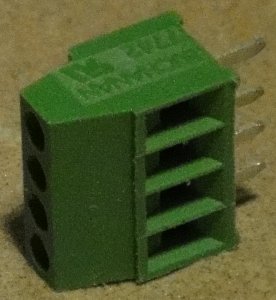|
Size: 2109
Comment:
|
← Revision 35 as of 2012-07-02 21:40:29 ⇥
Size: 3182
Comment:
|
| Deletions are marked like this. | Additions are marked like this. |
| Line 3: | Line 3: |
| I used [[http://fritzing.org/|Fritzing]] to lay out a two-layer !SpiffChorder development board and submitted an order for the prototype to [[http://fab.fritzing.org/|Fritzing Fab]]. The fabrication cost for one unit, including international shipping to the USA, was roughly US$40. I'll post pictures once it arrives in a couple weeks and I have a chance to run tests, but here are some preliminary details: | I used [[http://fritzing.org/|Fritzing]] to lay out a two-layer !SpiffChorder development board and ordered a prototype copy of it from [[http://fab.fritzing.org/|Fritzing Fab]]. The fabrication cost for one board (including international shipping to the USA) was roughly US$40, and I had it in my hands within a couple weeks. I soldered in all the components, wired it into my test keyer and everything checked out. I'm going to order a handful updated with the silkscreening depicted in the [[#Paper Placement Test|paper test]] below, and post updated pictures once those arrive. In the meantime, here are some preliminary details: |
| Line 23: | Line 23: |
= Condensed Board = For implementation in tighter spaces, I plan to design a stripped-down board omitting CON1, removing lines for M1-3 and UC from CON3 and the associated R15-18, using an 8-pin array (Digikey part MSP10KH-ND) for R8-14, reordering the remaining lines on CON3 to support more direct paths through the PCB, and replacing the GND line from CON4 with VCC like I did on the perfboard layout (since CON3 exposes GND anyway). I may also go with lower-profile parts for C4 and X1 so that skipping the socket for IC1 and the screw terminals for CON2-4 allow the assembly to be about half as thick. = ATmega32u4 = Once I get more familiarity with AVR development, I'd like to roll up my sleeves and try my hand at implementing a !SpiffChorder clone on Adafruit's [[http://www.adafruit.com/products/296|Atmega32u4 Breakout Board]]. |
Contents
Printed Circuit Board Layout
I used Fritzing to lay out a two-layer SpiffChorder development board and ordered a prototype copy of it from Fritzing Fab. The fabrication cost for one board (including international shipping to the USA) was roughly US$40, and I had it in my hands within a couple weeks. I soldered in all the components, wired it into my test keyer and everything checked out. I'm going to order a handful updated with the silkscreening depicted in the paper test below, and post updated pictures once those arrive. In the meantime, here are some preliminary details:
Fritzing's schematic view (printed to PDF at 450x315mm with no margins)
an etchable PDF export from Fritzing (combined using pdfunite from poppler-utils)
a ZIP archive of the Gerber export files for the prototype (sent to me by Fritzing Fab)
Bill of Materials
So far I'm using the same BoM from the perfboard design, but I'll probably switch up CON1 with Digikey part 609-2845-ND (vertical rather than right-angle) so as not to block the lower-left mounting hole.
Paper Placement Test
Here's a paper test using a 1:1 scale printout of the silkscreen and solder mask together:
Connector Detail
The 0.1" pitch right-angle screw terminal blocks I used are just slightly longer than 0.4" each. So as to be able to fit the four for CON3-4 directly adjacent to one another, I lightly sanded the facing sides until they fit snugly but evenly in a piece of perfboard. In an effort to make it easier to solder these evenly on the board, I attached their sides together with a tiny dab of quick-setting adhesive gel (being careful not to get it into the terminals themselves):


Condensed Board
For implementation in tighter spaces, I plan to design a stripped-down board omitting CON1, removing lines for M1-3 and UC from CON3 and the associated R15-18, using an 8-pin array (Digikey part MSP10KH-ND) for R8-14, reordering the remaining lines on CON3 to support more direct paths through the PCB, and replacing the GND line from CON4 with VCC like I did on the perfboard layout (since CON3 exposes GND anyway). I may also go with lower-profile parts for C4 and X1 so that skipping the socket for IC1 and the screw terminals for CON2-4 allow the assembly to be about half as thick.
ATmega32u4
Once I get more familiarity with AVR development, I'd like to roll up my sleeves and try my hand at implementing a SpiffChorder clone on Adafruit's Atmega32u4 Breakout Board.

 To the extent possible under law, the creator of this work has waived all copyright and related or neighboring rights to it.
To the extent possible under law, the creator of this work has waived all copyright and related or neighboring rights to it.